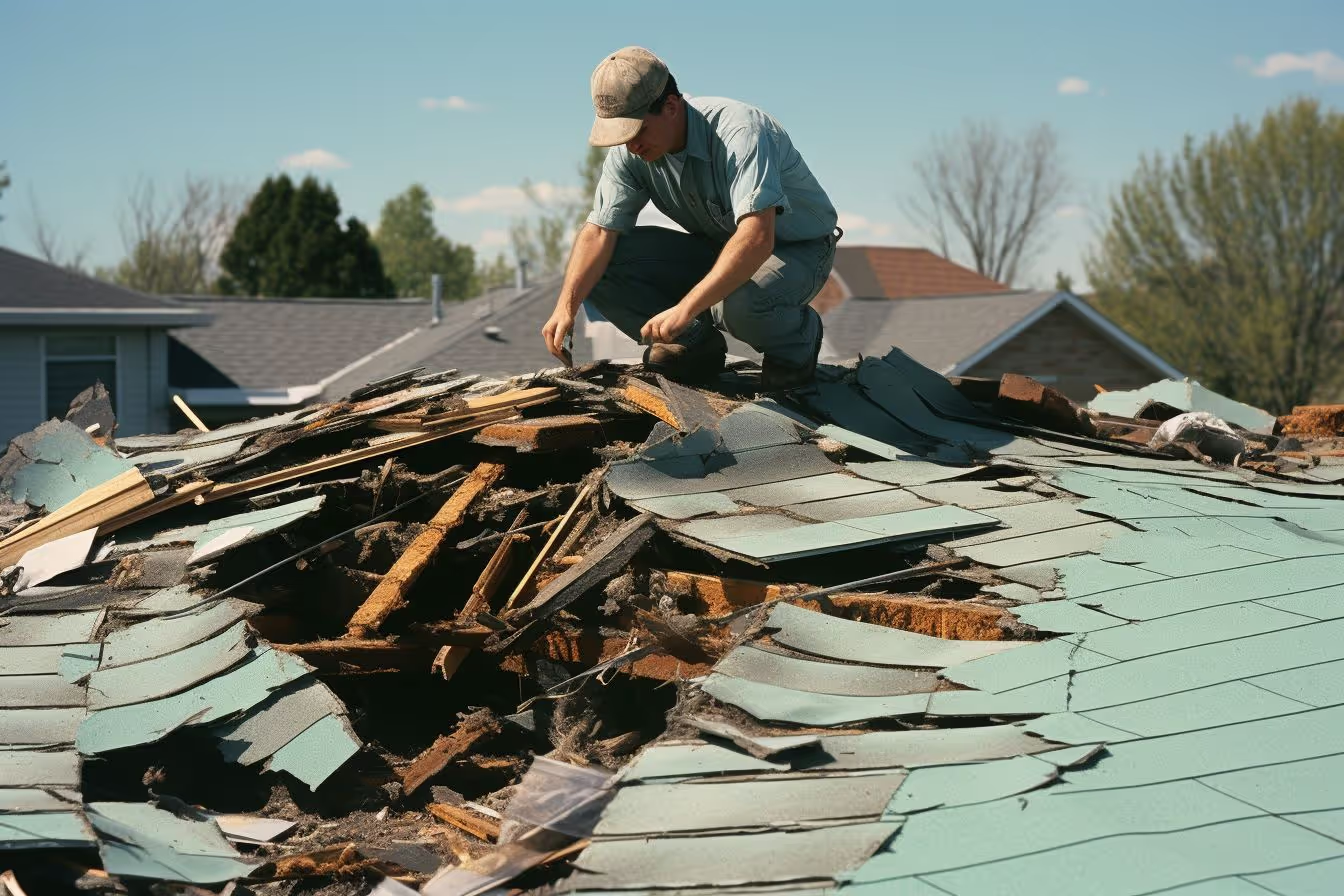When a storm hits and leaves its mark on your roof, navigating the insurance claim process can be as daunting as the storm itself. For homeowners, particularly those unaccustomed to dealing with insurance claims, the task of documenting roof storm damage can seem overwhelming. Yet, it’s a critical step in ensuring you receive the compensation you deserve to restore your home to its pre-storm condition.
In this comprehensive guide, we delve into the specifics of "How To Document Roof Storm Damage For Insurance Claims." The focus here is not just on capturing the extent of the damage but doing so in a way that aligns with insurance companies' requirements. Accurate and thorough documentation is key to a smooth claim process and is instrumental in avoiding common pitfalls that could lead to claim denials or underpayments.
Whether you’re a first-time homeowner in a storm-prone area or have faced roofing challenges before, this guide is designed to equip you with the knowledge and tools needed for effective documentation. From understanding what to photograph and how to describe the damage, to providing tips on using technology to your advantage, we cover all the essentials. Our goal is to help you transform this potentially stressful endeavor into a manageable, well-organized process, ensuring that you're well-prepared to handle any roofing storm damage claims confidently and efficiently.
- Photographic Evidence: Capturing high-quality images and videos of all damages, including wide shots of the entire roof and close-ups of specific damages, is vital. The Metal Roofers will help in identifying and photographing key areas that need attention.
- Detailed Notes and Descriptions: Alongside photographic evidence, detailed notes describing each damage, its location, and possible causes are essential. This includes notes on missing shingles, leaks, dents, or any other roof impairments.
- Weather and Incident Reports: Gathering relevant weather reports or any other incident documentation that correlates with the time and cause of the roof damage. This historical data can significantly strengthen the claim.
Overall Roof Structure:
- Wide-angle shots showing the entire roof.
- Panoramic views to capture the roof’s condition in context with the entire property.
Specific Damage Areas:
- Close-up photos of damaged shingles or roofing materials.
- Images of missing or broken tiles.
- Shots of cracks, splits, or blistering on the roof surface.
- Pictures of damaged or clogged gutters and downspouts.
Weather-Related Damages:
- Evidence of hail impact, such as dents or marks on shingles.
- Photos showing wind damage, like lifted or missing shingles.
- Water pooling areas or signs of water penetration.
Roof Features:
- Detailed images of chimneys, vents, skylights, and other roof features showing damage.
- Shots of flashing around chimneys, vents, and skylights for any signs of damage or displacement.
Roof Edges and Ridge:
- Pictures of the roof's edges and ridge for signs of wear or damage.
- Documentation of any peeling or damage to the roof sealant.
Interior Signs of Damage:
- Images of water stains or leaks on the ceiling.
- Pictures of peeling paint or damaged plaster on the ceiling or walls.
- Photos of mold, mildew, or rot in attic spaces.
- Documentation of sagging or water-damaged ceilings.
Debris and Fallen Objects:
- Photos of any debris, tree limbs, or other objects that have fallen on the roof.
Video Documentation:
- A walkthrough video of the entire roof, narrating observed damages.
- A separate video inside the house showing any interior damages resulting from the roof issue.
Time and Date Stamps:
- Ensure all photos and videos are time and date stamped to validate the timeline of damage.
Surrounding Area:
- Shots of the surrounding area if it helps establish the cause or extent of damage (e.g., fallen trees or hail accumulation).
Comparison Shots:
- If available, before and after photos to highlight the extent of the damage.
Multiple Angles and Lighting Conditions:
- Photos taken from different angles to capture the full extent of each damaged area.
- Pictures taken in various lighting conditions to reveal subtle damages.
The Metal Roofers ensure that no aspect of the damage is overlooked:
- Comprehensive Roof Inspection: A thorough inspection of the roof, including hard-to-reach areas, to identify all potential damages.
- Attic Inspection: Checking the attic for leaks, water damage, or structural issues that might correlate with external roof damage.
- External Factors: Assessing external factors like fallen tree limbs, hail impact areas, or wind damage that could have contributed to the roof damage.
Detailing in Claims Submission
The Metal Roofers assist in compiling a detailed claim submission:
- Itemized Damage List: Creating an itemized list of all damages, categorizing them based on severity and type.
- Cost Estimates: Providing estimated repair costs for each item of damage, helping to establish the claim's financial aspect.
- Repair Timeline and Process: Outlining a proposed timeline for repairs and the processes involved, lending credibility to the claim.
Supplemental Claims
Handling supplemental claims for unforeseen damages:
- Additional Damage Identification: Post-repair inspections to identify any damages that were not apparent in the initial assessment.
- Supplemental Documentation: Gathering additional evidence and documentation for these new damages and submitting supplemental claims to the insurance company.
Finalizing the Claim
Ensuring all documentation is in order for the final submission:
- Completion Certificate: Issuing a certificate of completion once all repairs are done.
- Final Submission: Compiling all documentation, including the completion certificate, and submitting it to the insurance company to finalize the claim.
In conclusion, the insurance claims process for roof damage can be intricate and challenging. Homeowners benefit significantly from the expertise and guidance of professionals like The Metal Roofers, who ensure that every aspect of the claim is properly addressed, from initial assessment to final payment.
